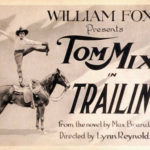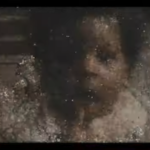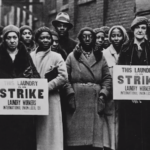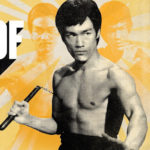Keeping an Eye on Surveillance
Torin Monahan explores what happens when social anxiety reigns, and surveillance seems to offer a remedy, in his latest book, Surveillance in the Time of Insecurity (Rutgers University Press).
 There, the associate professor of human & organizational development and associate professor of medicine at
Vanderbilt University examines the interplay of insecurity, surveillance, and inequality in modern times, taking as his illustrations such cultural artifacts as Christian “rapture” fiction and films, the blockbuster television show 24, and the rising tide of gated, video-monitored communities and the varied approaches to urban control of the movement of traffic and people.
There, the associate professor of human & organizational development and associate professor of medicine at
Vanderbilt University examines the interplay of insecurity, surveillance, and inequality in modern times, taking as his illustrations such cultural artifacts as Christian “rapture” fiction and films, the blockbuster television show 24, and the rising tide of gated, video-monitored communities and the varied approaches to urban control of the movement of traffic and people.
Here’s what Torin Monahan had to say about the films and footage he used in his study:
I relied on Netflix to assist me with the writing of two chapters of Surveillance in the Time of Insecurity. In one chapter I analyze the counterterrorism-themed show 24 and trace its connections to popular conceptions of risks posed by terrorism. I obtained all the seasons of the show through Netflix and then coordinated my analysis by referencing plot synopses on the show’s website. Additionally, I read numerous stories and reports about the effects of the show upon soldiers in Iraq and Afghanistan and upon members of the Bush administration and other public officials.
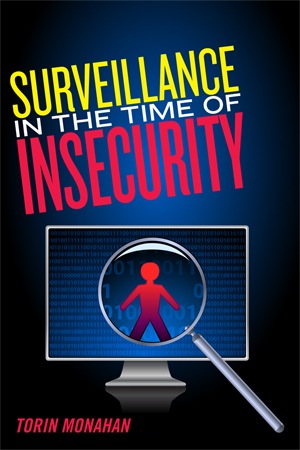 In another chapter, I analyze the popular genre of “rapture fiction,” with a focus on the Left Behind series. In addition to accessing the Left Behind books, I also obtained from Netflix the two feature films made about the story. The chapter argues that feelings of insecurity are often used by communities to justify harsh or unequal treatment of people considered to be different. In the narrative of the Left Behind story, belief in the forthcoming destruction of the world is used as a rationalization for excluding others and abdicating responsibility for the greater social good.
In another chapter, I analyze the popular genre of “rapture fiction,” with a focus on the Left Behind series. In addition to accessing the Left Behind books, I also obtained from Netflix the two feature films made about the story. The chapter argues that feelings of insecurity are often used by communities to justify harsh or unequal treatment of people considered to be different. In the narrative of the Left Behind story, belief in the forthcoming destruction of the world is used as a rationalization for excluding others and abdicating responsibility for the greater social good.
In research for another chapter, on intelligent transportation systems (ITS), I also viewed video footage monitored and shared by transportation engineers. Some of the most disturbing of these Internet-shared video files were of car crashes at intersections and of pedestrians being hit by vehicles moving at high speeds. It struck me that these files, which were shared among engineers through email, were pornographic in their gratuitous presentation of violence, so I have opted not to reproduce that violence in my speaking or writing on the topic. However, in the chapter on ITS, I do discuss other video footage monitored and acted upon, mostly in real-time, by transportation engineers and others.
What kinds of challenges, rewards, experiences, or surprises did you have, in the archival part of your project?
The chapter I wrote on 24 simply couldn’t have been written without accessing all the seasons and episodes of that show. Thus, the biggest reward was that the moving-image archive, as such, made possible in-depth analysis of this highly entertaining show.
Viewing the seasons in this way allowed me to take a step back and look for dominant themes and connections among the various plot lines and to draw out – in my writing – the implications of those themes for real-world experiences and politics. One key challenge was coding the shows in such a way that I could readily access quotes or reference particular plot lines. If there were transcripts available of the shows, that would have assisted this process immensely.
There’s not a whole lot to say about the challenges and rewards of viewing the Left Behind films. In the course of the research for this chapter, I was surprised to discover that this campy and roughly made media could attract such a monumental following. That made it all the more imperative, in my mind, to take the works and their potential ramifications seriously.
Left Behind (2000)
Left Behind II: Tribulation Force (2002)
Left Behind III: World at War (2005)
http://www.youtube.com/watch?v=MREYMpWc1Iw&feature=related
Finally, in doing the research for writing the chapter on intelligent transportation systems, I was surprised to find out that transportation engineers were reluctant to comment on – or even acknowledge – the ways in which their collected images and videos circulate (to other engineers, to the media, to the police). Transportation engineers do not see their work as being about “surveillance,” in spite of the fact that some of their activities clearly are surveillant ones. Even if engineers are not engaged in surveillance, however, the systems they oversee allow for the capture and circulation of images and data to other people, some of whom are very interested in monitoring and controlling others.
European Commission Video explaining Intelligent transportation Systems
presented at the American Association of State Highway and Transportation Officials (AASHTO) 2007 Annual Meeting.
Previous Post: Can that Laughter
Next Post: Searching East Asian Archives

